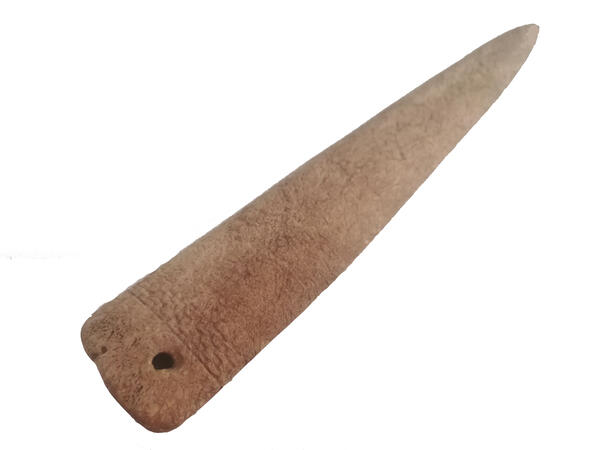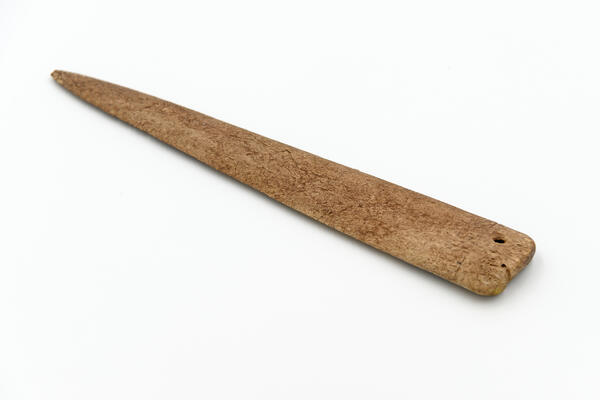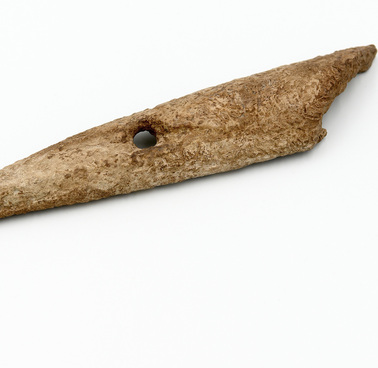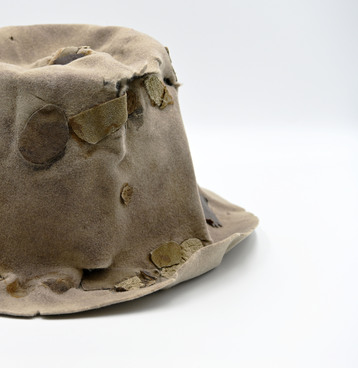The exhibition of the Polyarny Museum of History and Local Lore presents a carved dagger found in the Kola Oleneostrovsky grave field.
In the Stone Age, large bones of ungulates were used to make daggers as the bones of marine animals are porous and not suitable for making tools or weapons. The dagger presented in the exhibition is made from a deer’s long leg bone. It was sawed lengthwise, cut, sharpened and sanded.
The dagger has a slightly convex surface on one side and a flattened one on the other. It is a double-edged weapon that can be used for stabbing, cutting and chopping. During the early Metal Ages, tools of labor and hunting were often decorated with patterns. Compositions of patterns are quite complex and diverse. The upper part of the presented dagger is decorated with the so-called “flowing” pattern. This pattern is very elegant and strictly symmetrical.
According to the latest research conducted by forensic archaeologists, the dagger was created with the help of metal tools and was not intended for performing everyday tasks. It is very likely that it was made specifically for a burial ceremony. This indicates the existence of special rituals associated with the burial of the dead. The appearance of such a large, obviously ancestral necropolis as the Kola Oleneostrovsky grave field is a sign of veneration of the dead. People in the Stone Age believed that the dead maintained connection with the living and continued participating in their lives. They could be sympathetic to the living, help them from beyond the veil or cause harm and send all kinds of troubles. Naturally, people were interested in avoiding the wrath of the dead and gaining their favor. This, as well as a sense of solidarity and kindred sympathies, leads to diverse forms of caring for the dead such as offerings and celebrations in their honor.
The body of the deceased was
prepared for the future life and provided with a “dwelling” — a grave. The desire to make
the life of a deceased relative easier in the “land of the dead” forced the
living to supply the deceased with everything necessary for life in the other
world. The number of things buried differed from person to person. Obviously,
the more important their role in ancient society, the
greater the concern for their well-being on the other side.




